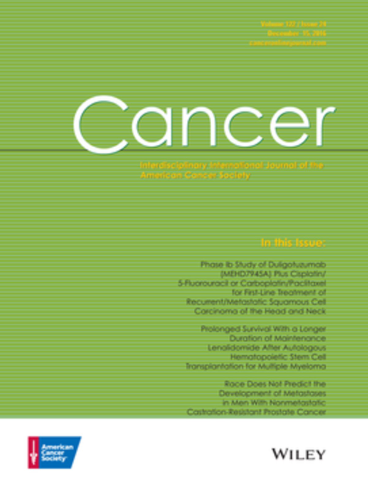Identification of novel prognostic autoantibodies in diffuse large B-cell lymphoma treated with rituximab plus cyclophosphamide, doxorubicin, vincristine, and prednisone via a high-throughput antigen microarray
Abstract
Background
R-CHOP (rituximab plus cyclophosphamide, doxorubicin, vincristine, and prednisone) is a standard first-line treatment for diffuse large B-cell lymphoma (DLBCL). However, 20%–40% of patients survive less than 5 years. Novel prognostic biomarkers remain in demand.
Methods
Baseline plasma autoantibodies (AAbs) were assessed in 336 DLBCLs. In the discovery phase (n = 20), a high-density antigen microarray (∼21,000 proteins) was used to expound AAb profiles. In the verification phase (n = 181), with a DLBCL-focused microarray, comparative results based on event-free survival at 24 months (EFS24) and lasso Cox regression models of progression-free survival (PFS) and overall survival (OS) were integrated to identify potential biomarkers. They were further validated by enzyme-linked immunosorbent assay in validation phase 1 (n = 135) and a dynamic cohort (n = 12). In validation phase 2, a two-AAb-based risk score was established. They were further validated in an immunohistochemistry cohort (n = 55) and four independent Gene Expression Omnibus datasets (n = 1598).
Results
Four AAbs (CREB1, N4BP1, UBAP2, and DEAF1) were identified that showed associations with EFS24 status (p < .05) and superior PFS and OS (p < .05). A novel risk score model based on CREB1 and N4BP1 AAbs was developed to predict PFS with areas under the curve of 0.72, 0.71, 0.76, and 0.82 at 1, 3, 5, and 7 years, respectively, in DLBCL treated with R-CHOP independent of the International Prognostic Index (IPI) and provided significant additional recurrence risk discrimination (p < .05) for the IPI. CREB1 and N4BP1 proteins and messenger RNAs were also associated with better PFS and OS (p < .05).
Conclusions
This study identified a novel prognostic panel of CREB1, N4BP1, DEAF1, and UBAP2 AAbs that is independent of the IPI in DLBCL.


 求助内容:
求助内容: 应助结果提醒方式:
应助结果提醒方式:


